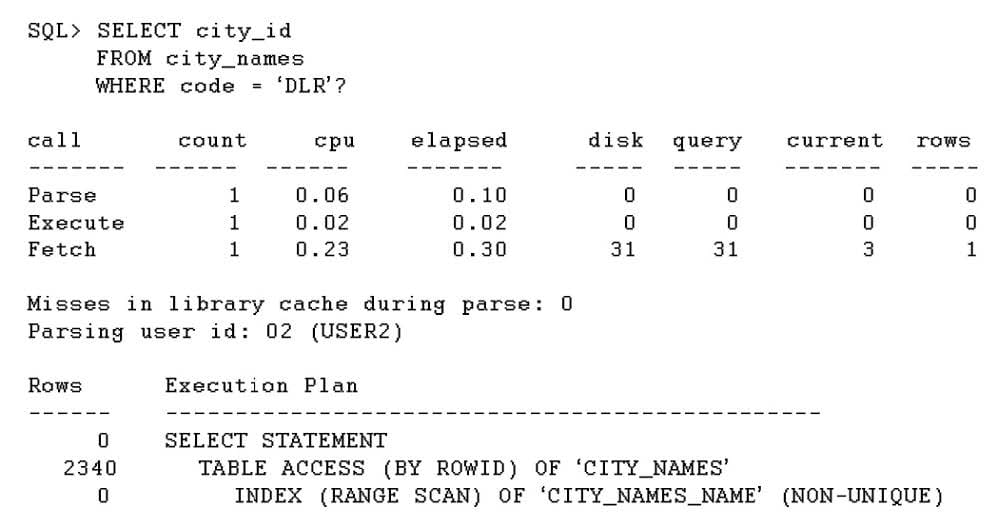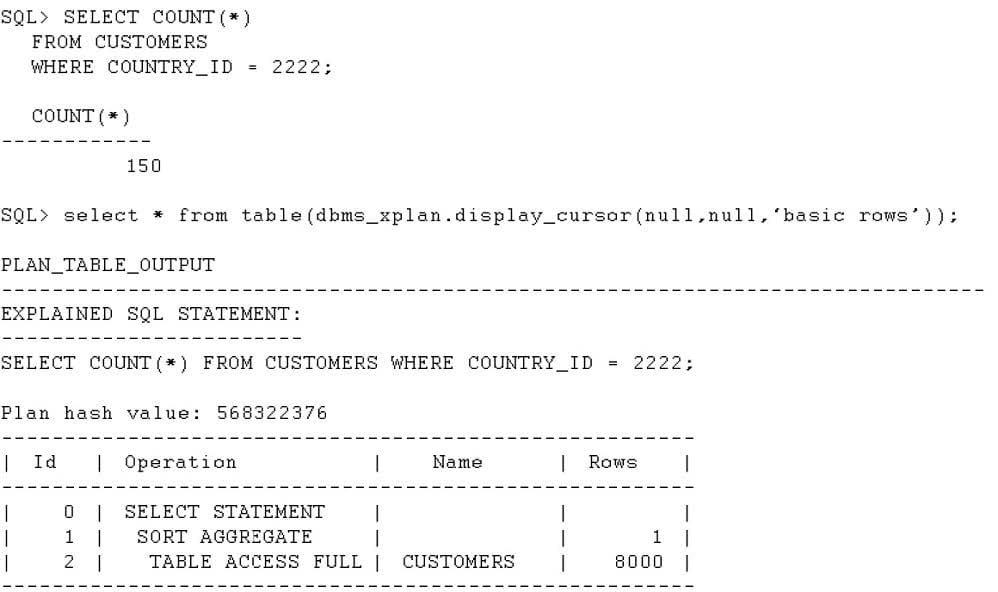
1Z0-064 Exam Questions & Answers
Exam Code: 1Z0-064
Exam Name: Oracle Database 12c: Performance Management and Tuning
Updated: Apr 24, 2024
Q&As: 119
At Passcerty.com, we pride ourselves on the comprehensive nature of our 1Z0-064 exam dumps, designed meticulously to encompass all key topics and nuances you might encounter during the real examination. Regular updates are a cornerstone of our service, ensuring that our dedicated users always have their hands on the most recent and relevant Q&A dumps. Behind every meticulously curated question and answer lies the hard work of our seasoned team of experts, who bring years of experience and knowledge into crafting these premium materials. And while we are invested in offering top-notch content, we also believe in empowering our community. As a token of our commitment to your success, we're delighted to offer a substantial portion of our resources for free practice. We invite you to make the most of the following content, and wish you every success in your endeavors.

Download Free Oracle 1Z0-064 Demo
Experience Passcerty.com exam material in PDF version.
Simply submit your e-mail address below to get started with our PDF real exam demo of your Oracle 1Z0-064 exam.
![]() Instant download
Instant download
![]() Latest update demo according to real exam
Latest update demo according to real exam
* Our demo shows only a few questions from your selected exam for evaluating purposes
Free Oracle 1Z0-064 Dumps
Practice These Free Questions and Answers to Pass the Oracle Database Exam
Your database supports a mixed workload. The ERP application creates short sessions and performs small, random I/Os; the REPORTING application executes long-running DSS queries.
You want to set a priority for the workload generated by the ERP application and optimize resource usage for them.
Which three objectives can be achieved by the Resource Manager? (Choose three.)
A. limiting the amount of time that a session is idle and blocking other sessions of the ERP application
B. limiting the amount of undo generated by operations performed by sessions created by the ERP application
C. creating two resource plans with resource limits defined for the workload generated by the applications and automatically changing resource plans based on the workload
D. allocating a lower percentage of CPU to sessions used by the REPORTING application than to those used by the ERP application
E. limiting the physical I/O performed by the sessions or users of the ERP application that are connected to the database
Examine the partial TKPROF output for an SQL statement: Which two inferences can definitely be made from this output? (Choose two.)

A. Array fetch operations were not performed for this query.
B. No hard parse was performed for this query.
C. The number of logical I/Os is almost equal to the number of physical I/Os.
D. Another transaction held a shared lock on the table, thereby causing a significant delay.
E. An uncommitted transaction made a series of updates to the NAME_ID column just before the execution of this query.
Examine the partial TOP 10 Foreground Events by Total Wait Time section of an AWR report:

What should you examine to diagnose the cause of the top three wait events? (Choose the best answer.)
A. the V$ACTIVE_SESSION_HISTORY view
B. the Time Model Statistics section of the AWR report
C. the SQL statements based on elapsed time from the AWR report
D. the Latch Activity section
E. the Segment Statistics section of the AWR report
Which two actions should you take to monitor the throughput generated by the modules of an application? (Choose two.)
A. Use the Resource Manager.
B. Enable SQL Trace at the session level.
C. Create a service.
D. Use a dedicated server configuration.
E. Use the DBMS_APPLICATION_INFO package to define the current module and action so that they appear in V$SESSION.
Your database supports an OLTP system.
Examine the parameter values configured in your database:

The CUSTOMERS table contains 8,000 rows. The CUST_ID column is the primary key and the COUNTRY_ID column contains only three possible values: 1111, 2222, and 3333.
You execute the commands:
SQL> EXECUTE DBMS_STATS.GATHER_TABLE_STATS(`SH',`CUSTOMERS');
PL/SQL procedure successfully completed.
SQL> CREATE INDEX COUNTRY_IDX ON CUSTOMERS (COUNTRY_ID);
Index created.
You then perform a series of INSERT, UPDATE, and DELETE operations on the table.
View the Exhibit to examine the query and its execution plan.

Which three options would improve the performance of the query? (Choose three.)
A. creating a bitmap index on the COUNTRY_ID column
B. regathering statistics on the CUSTOMERS table
C. creating a histogram on the COUNTRY_ID column
D. increasing the size of the PGA
E. creating a SQL profile
F. creating a KEEP cache
Viewing Page 3 of 3 pages. Download PDF or Software version with 119 questions

